1. Kummerow KL, Du L, Penson DF, Shyr Y, Hooks MA. Nationwide trends in mastectomy for early-stage breast cancer. JAMA Surg. 2015; 150:9–16. PMID:
25408966.
2. Poggi MM, Danforth DN, Sciuto LC, Smith SL, Steinberg SM, Liewehr DJ, et al. Eighteen-year results in the treatment of early breast carcinoma with mastectomy versus breast conservation therapy: the National Cancer Institute Randomized Trial. Cancer. 2003; 98:697–702. PMID:
12910512.
3. Al-Ghazal SK, Fallowfield L, Blamey RW. Comparison of psychological aspects and patient satisfaction following breast conserving surgery, simple mastectomy and breast reconstruction. Eur J Cancer. 2000; 36:1938–1943. PMID:
11000574.
4. Weber WP, Soysal SD, Fulco I, Barandun M, Babst D, Kalbermatten D, et al. Standardization of oncoplastic breast conserving surgery. Eur J Surg Oncol. 2017; 43:1236–1243. PMID:
28214053.
5. Aaronson NK, Ahmedzai S, Bergman B, Bullinger M, Cull A, Duez NJ, et al. The European Organization for Research and Treatment of Cancer QLQ-C30: a quality-of-life instrument for use in international clinical trials in oncology. J Natl Cancer Inst. 1993; 85:365–376. PMID:
8433390.
6. Sprangers MA, Groenvold M, Arraras JI, Franklin J, te Velde A, Muller M, et al. The European Organization for Research and Treatment of Cancer breast cancer-specific quality-of-life questionnaire module: first results from a three-country field study. J Clin Oncol. 1996; 14:2756–2768. PMID:
8874337.
7. Tan ML, Idris DB, Teo LW, Loh SY, Seow GC, Chia YY, et al. Validation of EORTC QLQ-C30 and QLQ-BR23 questionnaires in the measurement of quality of life of breast cancer patients in Singapore. Asia Pac J Oncol Nurs. 2014; 1:22–32. PMID:
27981079.
8. Winters ZE, Afzal M, Rutherford C, Holzner B, Rumpold G, da Costa Vieira RA, et al. International validation of the European Organisation for Research and Treatment of Cancer QLQ-BRECON23 quality-of-life questionnaire for women undergoing breast reconstruction. Br J Surg. 2018; 105:209–222. PMID:
29116657.
9. Davies CF, Macefield R, Avery K, Blazeby JM, Potter S. Patient-reported outcome measures for post-mastectomy breast reconstruction: a systematic review of development and measurement properties. Ann Surg Oncol. 2021; 28:386–404. PMID:
32602063.
10. Weick L, Brorson F, Jepsen C, Lidén M, Jensen EW, Hansson E. Giving meaning to patient reported outcomes in breast reconstruction after mastectomy: a systematic review of available scores and suggestions for further research. Breast. 2022; 61:91–97. PMID:
34929423.
11. Chatterjee A, Gass J, Patel K, Holmes D, Kopkash K, Peiris L, et al. A Consensus Definition and Classification System of Oncoplastic Surgery Developed by the American Society of Breast Surgeons. Ann Surg Oncol. 2019; 26:3436–3444. PMID:
30977016.
12. Gradishar WJ, Moran MS, Abraham J, Aft R, Agnese D, Allison KH, et al. Breast Cancer, Version 3.2022, NCCN Clinical Practice Guidelines in Oncology. J Natl Compr Canc Netw. 2022; 20:691–722. PMID:
35714673.
13. Guzelant A, Goksel T, Ozkok S, Tasbakan S, Aysan T, Bottomley A. The European Organization for Research and Treatment of Cancer QLQ-C30: an examination into the cultural validity and reliability of the Turkish version of the EORTC QLQ-C30. Eur J Cancer Care (Engl). 2004; 13:135–144. PMID:
15115469.
14. Dalci K, Gumus S, Saritas AG, Gul MO, Rencuzogullari A, Akcam AT, et al. Modified techniques versus Hadfield’s procedure in patients with periductal mastitis. BMC Surg. 2022; 22:40. PMID:
35120473.
15. Curran D, van Dongen JP, Aaronson NK, Kiebert G, Fentiman IS, Mignolet F, et al. Quality of life of early-stage breast cancer patients treated with radical mastectomy or breast-conserving procedures: results of EORTC Trial 10801. Eur J Cancer. 1998; 34:307–314. PMID:
9640214.
16. Kronowitz SJ, Feledy JA, Hunt KK, Kuerer HM, Youssef A, Koutz CA, et al. Determining the optimal approach to breast reconstruction after partial mastectomy. Plast Reconstr Surg. 2006; 117:1–14. PMID:
16404237.
17. Meretoja TJ, Svarvar C, Jahkola TA. Outcome of oncoplastic breast surgery in 90 prospective patients. Am J Surg. 2010; 200:224–228. PMID:
20573334.
18. Santos G, Urban C, Edelweiss MI, Zucca-Matthes G, de Oliveira VM, Arana GH, et al. Long-term comparison of aesthetical outcomes after oncoplastic surgery and lumpectomy in breast cancer patients. Ann Surg Oncol. 2015; 22:2500–2508. PMID:
25519931.
19. Chan SW, Cheung PS, Lam SH. Cosmetic outcome and percentage of breast volume excision in oncoplastic breast conserving surgery. World J Surg. 2010; 34:1447–1452. PMID:
19936979.
20. Down SK, Jha PK, Burger A, Hussien MI. Oncological advantages of oncoplastic breast-conserving surgery in treatment of early breast cancer. Breast J. 2013; 19:56–63. PMID:
23301761.
21. Chen JY, Huang YJ, Zhang LL, Yang CQ, Wang K. Comparison of oncoplastic breast-conserving surgery and breast-conserving surgery alone: a meta-analysis. J Breast Cancer. 2018; 21:321–329. PMID:
30275861.
22. Ojala K, Meretoja TJ, Leidenius MH. Aesthetic and functional outcome after breast conserving surgery: comparison between conventional and oncoplastic resection. Eur J Surg Oncol. 2017; 43:658–664. PMID:
28040314.
23. Cardoso MJ, Cardoso J, Amaral N, Azevedo I, Barreau L, Bernardo M, et al. Turning subjective into objective: the BCCT. core software for evaluation of cosmetic results in breast cancer conservative treatment. Breast. 2007; 16:456–461. PMID:
17606373.
24. Dahlbäck C, Ul lmark JH, Rehn M, Ringberg A, Manjer J. Aesthetic result after breast-conserving therapy is associated with quality of life several years after treatment. Swedish women evaluated with BCCT.core and BREAST-Q™. Breast Cancer Res Treat. 2017; 164:679–687. PMID:
28536951.
25. Kim KD, Kim Z, Kuk JC, Jeong J, Choi KS, Hur SM, et al. Long-term results of oncoplastic breast surgery with latissimus dorsi flap reconstruction: a pilot study of the objective cosmetic results and patient reported outcome. Ann Surg Treat Res. 2016; 90:117–123. PMID:
26942154.
26. Rose M, Svensson H, Handler J, Hoyer U, Ringberg A, Manjer J. Patient-reported outcome after oncoplastic breast surgery compared with conventional breast-conserving surgery in breast cancer. Breast Cancer Res Treat. 2020; 180:247–256. PMID:
31989380.
27. Bok SK, Song Y, Lim A, Choi H, Shin H, Jin S. Korean translation and psychometric evaluation of Korean version EORTC QLQ-BRECON23. Int J Environ Res Public Health. 2020; 17:9163. PMID:
33302470.
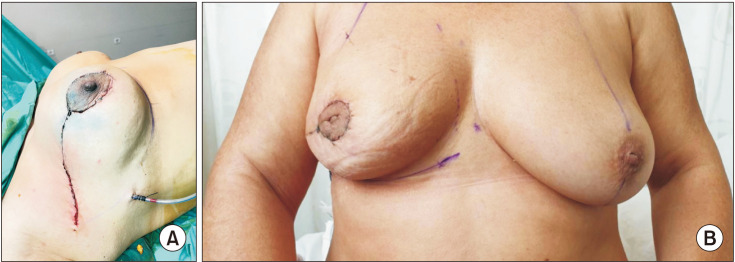
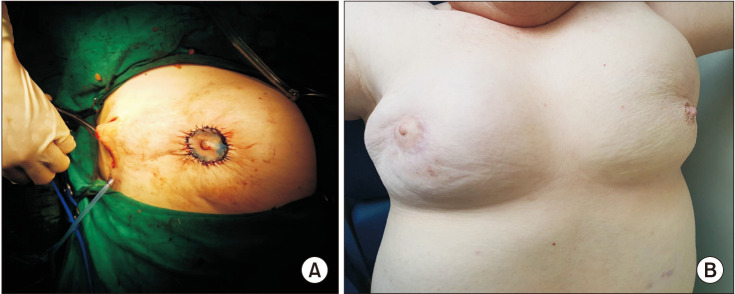
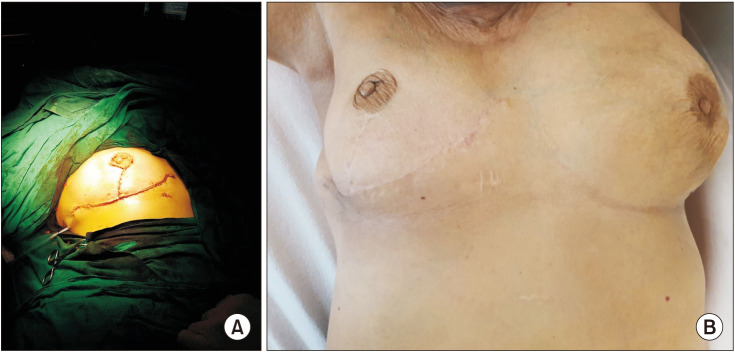
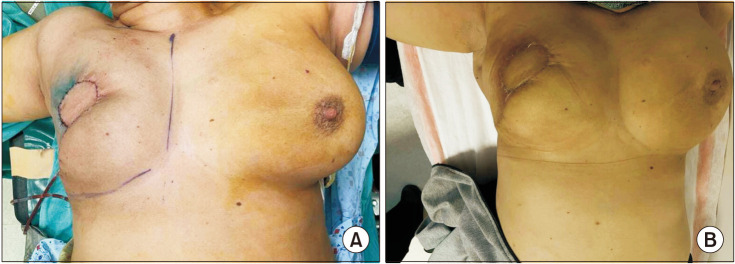
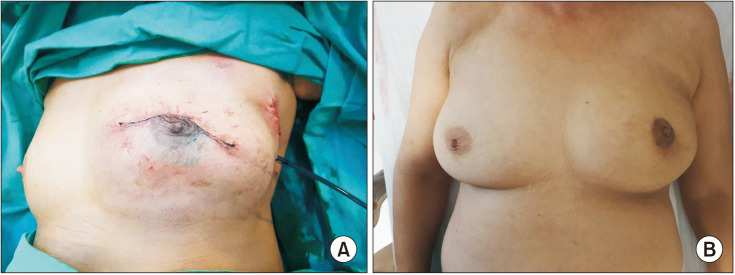
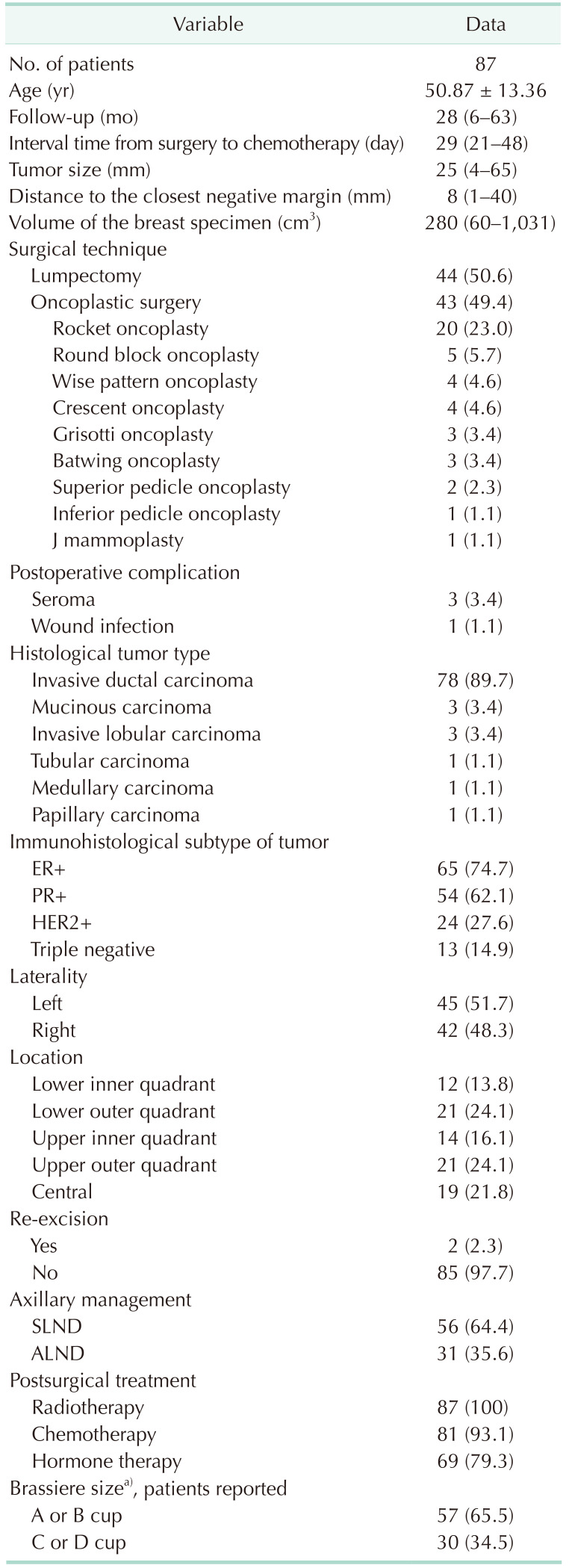
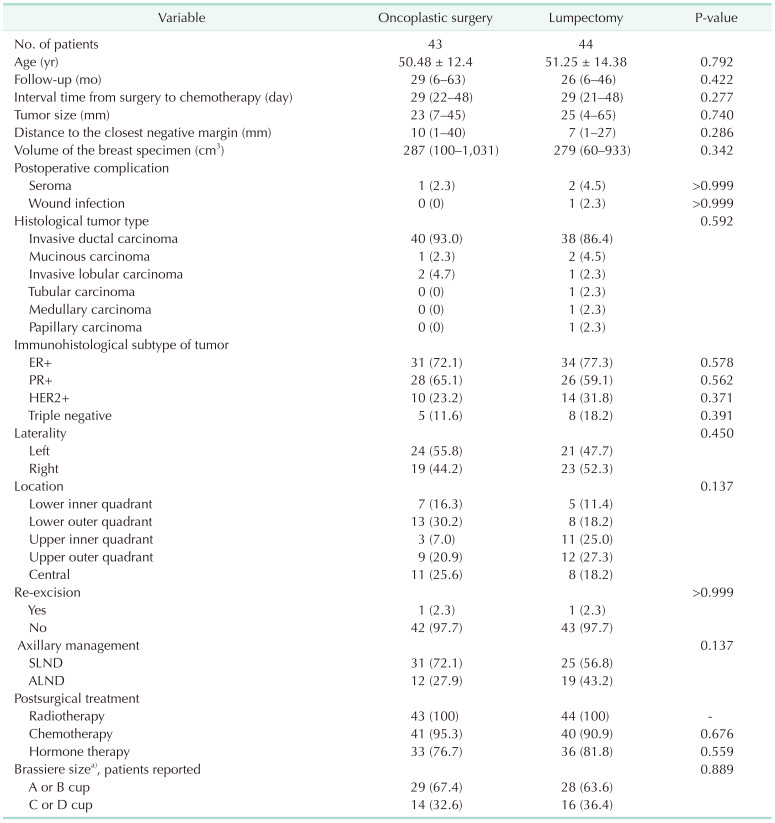





 PDF
PDF Citation
Citation Print
Print



 XML Download
XML Download